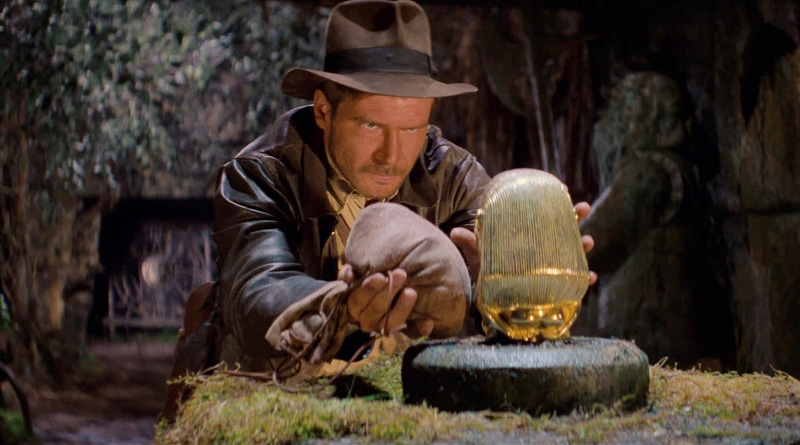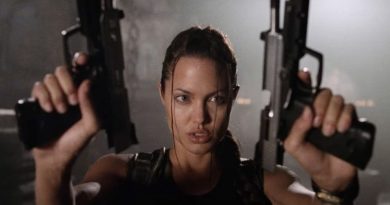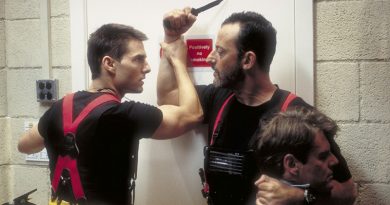Raiders of the Lost Ark at 40: Still The Greatest Adventure Film Ever Made
(Disclaimer: This feature article contains spoilers)
From Romancing the Stone (1984) to The Mummy (1999), Tomb Raider (2001) and Jackie Chan-starred Armour of God trilogy, all of these action-adventure films were largely indebted to one particular movie. That movie in question is none other than Indiana Jones and Raiders of the Lost Ark or simply known as Raiders of the Lost Ark.
Of course, Raiders of the Lost Ark wasn’t the first film of its kind. Sure, there were already such films seen in the likes of The Treasure of the Sierra Madre (1948), King Solomon’s Mines (1950) and Secret of the Incas (1954). The latter, which starred Charlton Heston as Harry Steele served as a major inspiration for the creation of Harrison Ford’s Indiana Jones character (including the now-iconic fedora and its leather jacket). But it wasn’t until the arrival of Raiders of the Lost Ark that forever changed Hollywood cinema in the action-adventure genre and subsequently influenced countless others until today.
Released on June 12, 1981, Raiders of the Lost Ark opened in the No 1 spot and beat its other competitors including the Harry Hamlin-starred Clash of the Titans and Mel Brooks’ History of the World, Part I during the same weekend. Although the film didn’t manage to retain its position with Superman II took over the top spot the following weekend, it held well enough for the next 80 weeks. By the end of its original theatrical run, Raiders of the Lost Ark made enough money to become the highest-grossing film of 1981 at US$212.2 million.
Having revisited Raiders of the Lost Ark a few days ago, the film remains a lively yet entertaining blockbuster. Even it has been 40 years already since its debut. One of the successful formulas that made the film such an enduring classic is Harrison Ford himself. Thanks to Ford’s signature roguish charm similar to his Han Solo character in the first two Star Wars movies at the time (1977’s Star Wars and 1980’s The Empire Strikes Back), he’s perfect as Indiana Jones.
Frankly, it’s hard to imagine anyone else to play the role instead but believe it or not, George Lucas and Steven Spielberg initially had someone else in their mind. In other words, Ford wasn’t originally the first choice back then. Tom Selleck of TV’s Magnum, P.I. fame was the one who supposed to star in the film. Unfortunately, things didn’t work out as planned when the producers from that TV series refused to let Selleck take on the role due to his contractual obligation. With Selleck out of the picture, Ford subsequently became next in line and the rest, as they say, is history.
Aside from Ford’s charismatic performance, it also helps that his character is both witty and relatable. He’s not the kind of an indestructible action hero, where he’s an expert on everything. Even with his quick wit, he remains a flawed person just like any other human being.
Throughout the film, we see him try and fail to reach his goal (the opening scene where his rival, Belloq played by Paul Freeman steals the sacred golden idol from Indy’s possession comes to mind). But he never gives up easily no matter how many setbacks he has to go through. Indy may be a tough guy and while he’s capable of throwing some punches and good with his trusty whip, there are many times we see him get beaten and bruised (the fight scene where he faces Pat Roach’s Nazi henchman happens to be one of them). And yes, he’s afraid of snakes too.

Another distinctive quality that made Indy such an iconic figure? His spontaneity. This can be evidently seen during one of the film’s most memorable moments — a scene where Indy encounters an Arabian swordsman (actor and stuntman Terry Richards). Normally, we would expect the two of them to engage in a fight for a mano-a-mano showdown like this. But what could have been an epic duel turns out to be something else altogether: Indy pulls out his revolver and shoots the swordsman instead.
Interestingly enough, that aforementioned scene wasn’t initially planned as such. Indy was supposed to find himself in an elaborate fight, where he would use his whip against the swordsman. However, the plan was forced to call off because Ford suffered from a bad stomach condition at the time. So, he ended up coming with the “shoot the swordsman” idea to Spielberg and decided to go with it.
Raiders of the Lost Ark is also blessed with Spielberg’s engaging direction from start till finish. From the exciting Peruvian temple-set opening scene (more on this later), he keeps the pace brisk and economical. He doesn’t waste much time on exposition-heavy scenarios and even the subplot involved Indy’s love-hate relationship with Karen Allen’s Marion Ravenwood is efficiently integrated without affecting the momentum of the film.
The consistently high-stake situations play a huge part in this film as well. There is always a sense of impending danger lurking somewhere for Indy whenever he’s on a quest. Coupled with frequent close calls inspired by 1930s and 40s cliffhanger movie serials, the film is all expertly crafted to keep us occupied from one thrilling set-piece to another.
Speaking of the set-piece, Spielberg knows well how to stage a propulsive action sequence. Take the famous opening scene alone, as we find Indy attempts to steal the golden idol inside the booby-trapped temple. It’s the kind of moment that would fit nicely during the final third act. And yet, Spielberg made the smart choice grabbing our attention right from the beginning itself. And it works very well, where the scene culminated in a giant boulder rolling down the temple and Indy narrowly escapes from getting crushed by it.
Then, there’s the climactic truck chase along the desert road — all thrillingly choreographed with the combination of Spielberg’s dynamic camerawork and Michael Kahn’s fluid editing. Given Spielberg’s prior experience in making a chase movie in his 1971 feature-length directorial debut Duel, he put that same technical expertise to good use during the film’s particular elaborate scene.
Raiders of the Lost Ark equally benefitted from a terrific supporting cast, including Karen Allen, who plays Indy’s love interest, Marion. Far from a typical damsel-in-distress, she’s a feisty one and her chemistry with Ford’s Indiana Jones is undoubtedly one of the highlights of the film. John Rhys-Davis delivers solid support as Indy’s friend and sidekick, Sallah while the film also introduced not one but two memorable antagonists in the form of Paul Freeman’s sneaky turn as René Belloq and Ronald Lacey as the ruthless Nazi Gestapo agent, Arnold Ernst Toht.
Terrific action-adventure aside, the film deserves extra credit for introducing its macabre horror moments. This is especially notable during the final scene where two of the Nazis (Ronald Lacey’s Arnold Ernst Toht and Wolf Kahler’s Colonel Dietrich) ended up with their faces melted like candles after opening the titular ark. It even concluded that Freeman’s Belloq’s head exploded like a watermelon, eerily similar to David Cronenberg’s Scanners starring Michael Ironside. That film happened to release during the same year but a few months earlier in January.
Although the aforementioned scene is brief, it was an unforgettable moment even by today’s standard. And more so since it was filmed in a practical manner because the convenience of CGI wasn’t even existed back in the day. The Oscar-winning visual effects were made possible by Industrial Light & Magic, where the team using the combination of alginate, stone and gelatin to construct the human head. They reportedly utilised a combination of propane heaters and a handheld heat gun to make the face melt.
In addition to winning the much-deserved Best Visual Effects, Raiders of the Lost Ark also took home four more technical awards including Best Art Direction-Set Decoration, Best Sound, Best Sound Effects Editing and Best Film Editing. The Oscars, which is traditionally known for its bias towards genre films, did give Raiders of the Lost Ark an exception in two of the key award categories including Best Picture and Best Director. Despite the film’s mass popularity, both awards were lost to Chariots of Fire and Warren Beatty for Reds respectively.
The huge success of Raiders of the Lost Ark led to a lucrative franchise, even though the next two films — Indiana Jones and the Temple of Doom (1984) and Indiana Jones and the Last Crusade (1989) — weren’t as great as the first film. Spielberg did return to direct the fourth film titled Indiana Jones and the Kingdom of the Crystal Skull in 2008 to mixed reviews.
And just like Indy’s never-give-up attitude, the franchise refuses to end as Ford is currently filming the long-in-development fifth instalment. Originally to be directed by Spielberg himself, he gradually pulled out but remained as one of the producers and made ways for James Mangold (Logan, Ford v Ferrari).
While Mangold did seem like a worthy replacement, particularly judging by the majority of his stellar works (he also directed Cop Land and others like Identity and Walk the Line), I remain doubtful about Ford reprising his iconic role. Besides, by the time the film arrived in (the currently scheduled) July 2022, it’s going to take a lot of suspension of disbelief to see a 79-year-old actor leading in a new Indiana Jones film.




